There is a number of different ways to slash your landsknecht/trossfrau decorations, the fastest is to simply cut out the pattern in the fabric. Cut out slashes require a fabric that doesn’t fray to much, it is also probably the most period way of slashing. The modern fabric we have today isn’t as felted always, and sometimes you might want to use a light weight wool, then you have the cut-and-stitch option available.
I prefer to cut and stitch, it kind of makes it look neater and also guarantee to prevents the slashes to fray.
Draw the pattern of your choice, cut with a pair of scissors or use a scalpel, fold the fabric and stitch it down.
Spray the fabric with water and press it flat with the iron.
For smaller slashes that will be folded I just fold the fabric and cut it;
A tip when working with wool is that wool is very easy to cut-and-rip, I don’t have to put any time in measuring and cutting …something’s that comes very handy and time saving when you for example makes the long trims on the trossfrau skirts. There is a loss of about 2 mm when ripping, but since I handsew most of the garb, the time savings is well worth that cost (…and I am also 100% sure that my trims are straight).
The white trim I’m making for today is for decorating a pair of short hosen (popular known as landsknecht hot pants). I used the same technique on a pair of other hosen I made for the husband earlier this year;
After cutting the slashes on the trim, stitch the cuttings down on the backside, forming an oval shape
When done, I flatten the fabric with water and iron
Then it’s ready to be used in the way you prefer
The trim is 71×8 cm, and has 33 slashes, and takes about 3-4 hours to make.
For puffing I usually use silk; it is light weight so it puffs very nicely and doesn’t become as dirty as linen, the light weight also comes in handy when traveling with airplanes, when every gram is counted for …and wool garb it self is heavy enough.
What would have been used during the 16th century is an open discussion, most people back then would probably use the cheapest material like for example linen, and some people might have the economy to use the more expensive silk.
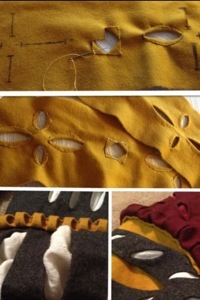
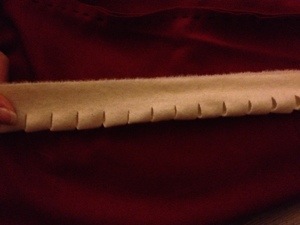
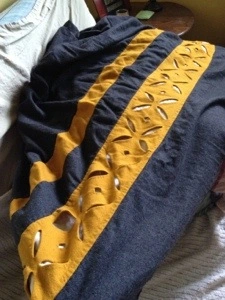
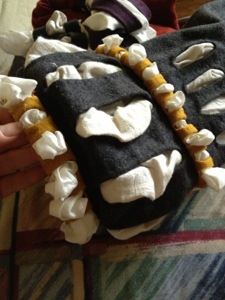
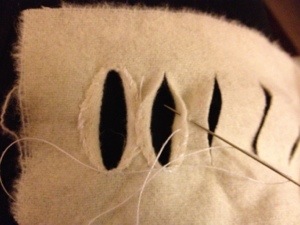
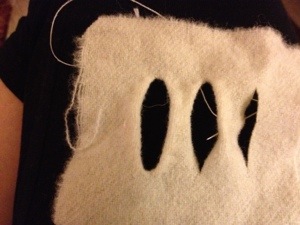
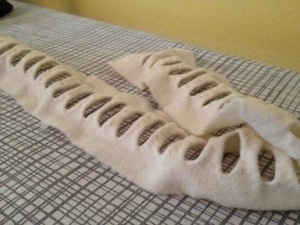
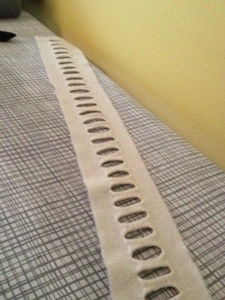
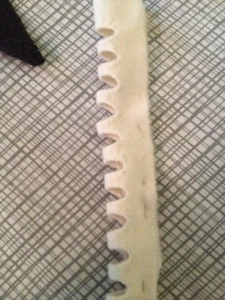
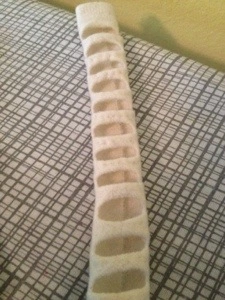
[…] velvet, brocade or other fabrics that fray easily. (read more about how I use the technique on wool here). It’s most commonly seen on Saxon […]
[…] Whilja’s Corner: Slashing https://whiljascorner.wordpress.com/2013/08/30/making-slashes/ The German Renaissance of Genoveva: Gold Haube […]
[…] https://whiljascorner.wordpress.com/2013/08/30/making-slashes/ […]
[…] https://whiljascorner.wordpress.com/2013/08/30/making-slashes/ […]
[…] black wool was slashed using a rotary tool and lined with white linen. There is a tutorial on Whilja’s Corner I used to slash the trim. I hand sewed the trim to the bodice. I went with smaller strips of fabric […]
[…] a band in the skirt with slashes showing a white linen layer underneath. There is a tutorial on Whilja’s Corner showing the method I used for slashing. Initially, I did not attach the wool slashes to […]